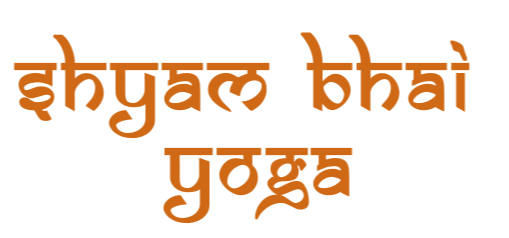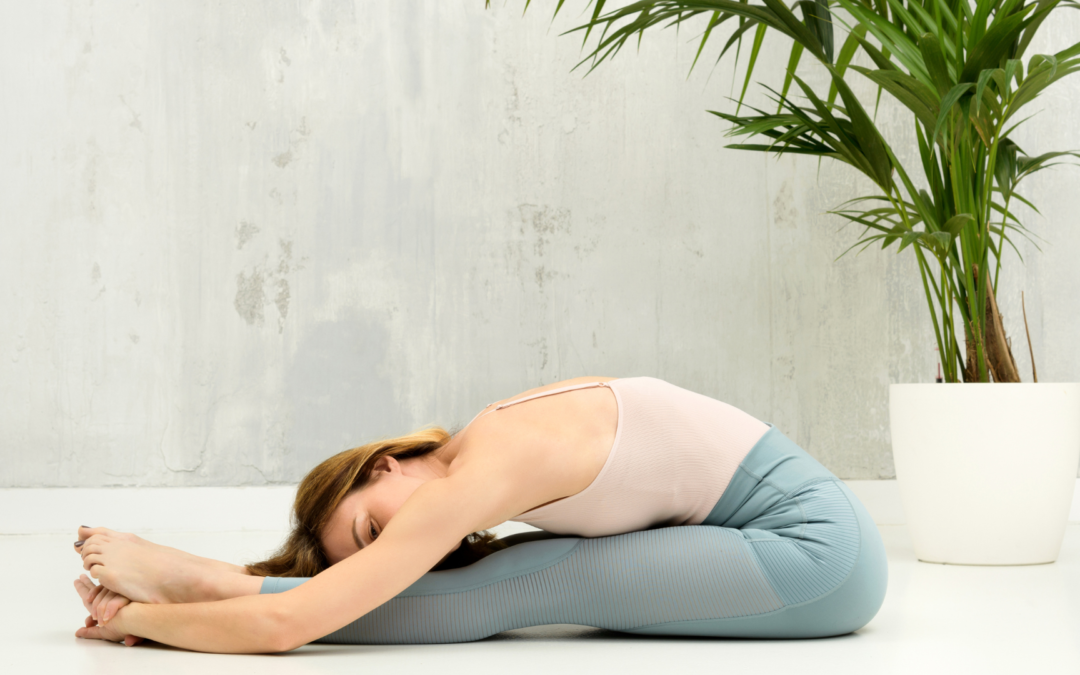Silent Strength: A Beginner’s Guide to Restorative Yoga
Welcome to the serene world of Shyambhai Yoga, where we believe that strength often lies in silence and stillness. In today’s fast-paced world, taking a moment to pause can feel like a luxury, but it’s a necessity for the body and mind. Enter restorative yoga—a gentle yet profound practice that invites us to slow down, let go, and reconnect with ourselves on a deeper level. Studies show that in India, yoga has been integrated into the healthcare system, with institutions like the National Institute of Mental Health and Neurosciences (NIMHANS) offering yoga therapy for various health conditions.
This guide will walk you through the magic of restorative yoga, why it’s perfect for beginners, and how you can incorporate it into your life for lasting benefits.
What is Restorative Yoga?
Restorative yoga is a practice rooted in rest and rejuvenation. Unlike more dynamic yoga styles, it focuses on stillness, comfort, and deep relaxation. Using props like bolsters, blankets, and blocks, each pose is held for an extended period—often five to ten minutes or more. The goal is to create a supportive environment that allows your body to relax completely and your mind to find peace.
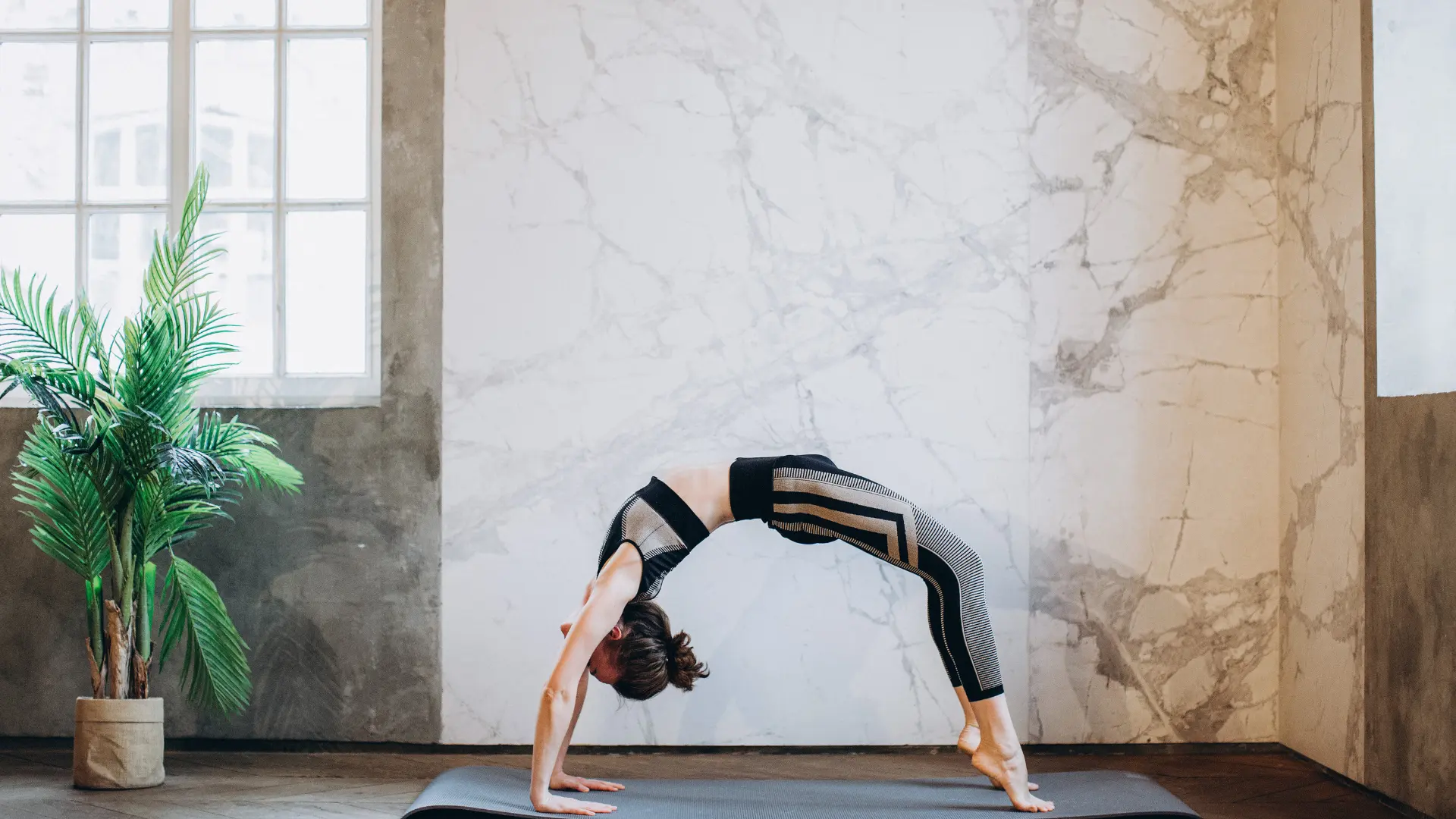
Think of it as the yoga equivalent of a warm hug. It’s less about stretching or strengthening your muscles and more about creating space for healing and renewal.
Why Choose Restorative Yoga?
If you’re new to yoga, restorative yoga offers a gentle entry point. It’s not about mastering advanced poses or pushing your limits; instead, it’s an invitation to tune into your breath, listen to your body, and cultivate a sense of ease.
Here’s why restorative yoga could be your perfect match:
- Stress Relief: Online yoga classes for stress relief activates the parasympathetic nervous system, which helps lower stress levels and promotes relaxation.
- Improved Sleep: Many practitioners find that restorative yoga helps combat insomnia by calming the mind.
- Gentle on the Body: It’s accessible to people of all ages and fitness levels. Whether you’re recovering from an injury or just looking for a low-impact way to stay active, restorative yoga is a safe choice.
- Mental Clarity: By slowing down, you create space for introspection and mindfulness.
- Enhanced Flexibility: While not its primary focus, restorative poses gently open and stretch the body over time.
What to Expect in a Restorative Yoga Class
Walking into a restorative yoga class at Shyambhai Yoga feels like stepping into a sanctuary. Here’s a glimpse of what you can expect:
- A Calm Setting: Soft lighting, soothing music, and a welcoming atmosphere set the tone for relaxation.
- Minimal Movement: You’ll move into a handful of poses during the session, often with the guidance of a friendly instructor.
- Props Galore: Bolsters, blankets, eye pillows, and blocks are used to support your body fully.
- Guided Relaxation: The instructor might lead you through breathing exercises or meditative prompts to deepen your experience.
5 Beginner-Friendly Restorative Yoga Poses
Here are a few poses to try at home or in a class. Each one is designed to ease tension and invite relaxation:
1. Child’s Pose (Balasana)
- How to Do It: Kneel on the mat, bring your big toes to touch, and sit back on your heels. Stretch your arms forward, resting your forehead on the mat or a bolster.
- Why It Helps: Gently stretches the lower back and hips while calming the mind.

2. Supported Bridge Pose (Setu Bandhasana)
- How to Do It: Lie on your back, bend your knees, and place your feet flat on the mat. Slide a block or bolster under your sacrum (lower back) for support.
- Why It Helps: Opens the chest and relieves tension in the lower back.

3. Reclined Butterfly Pose (Supta Baddha Konasana)
- How to Do It: Lie on your back, bring the soles of your feet together, and let your knees fall apart. Place bolsters under your knees for support.
- Why It Helps: Opens the hips and groin while encouraging deep breathing.
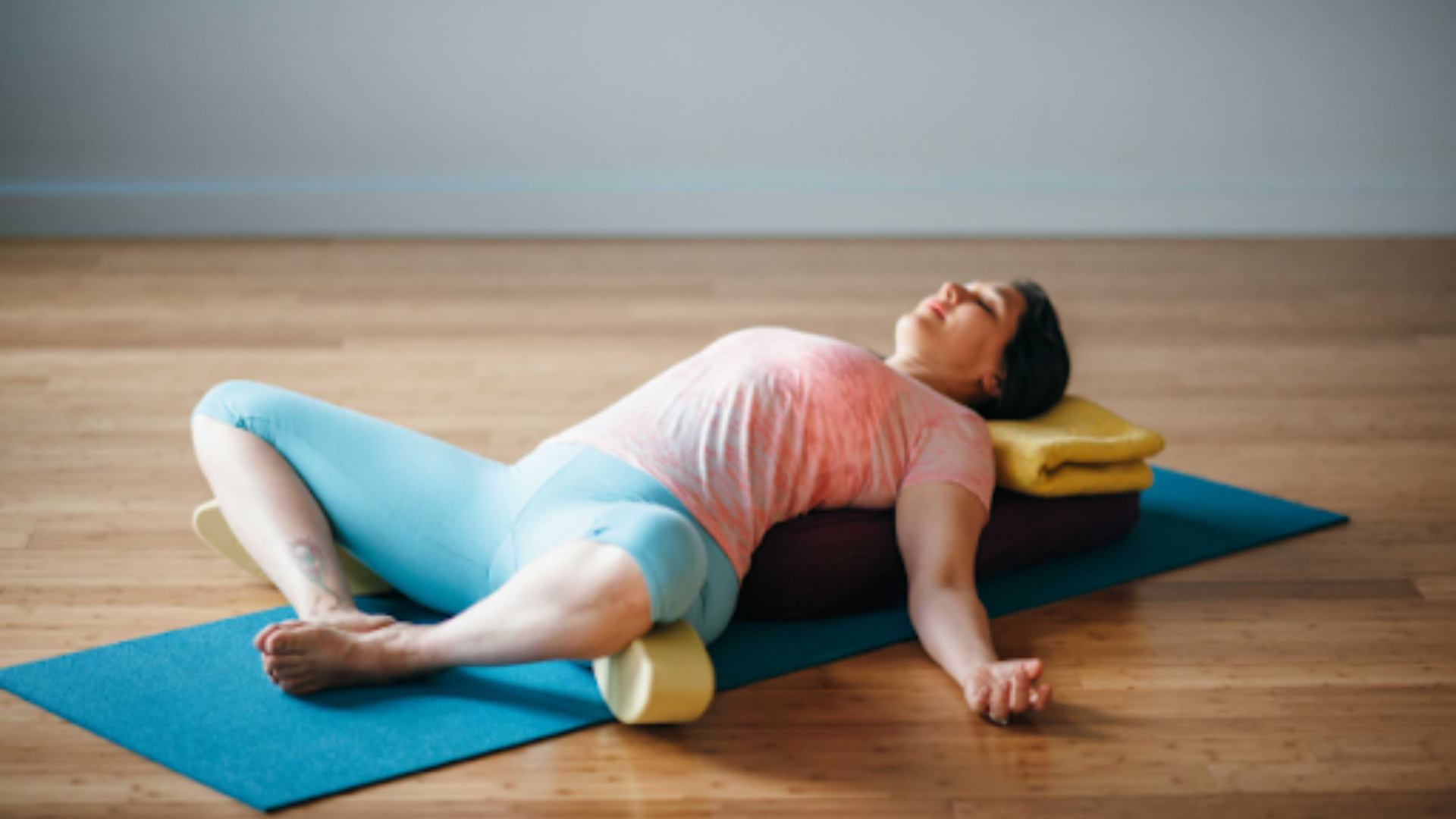
4. Legs-Up-the-Wall Pose (Viparita Karani)
- How to Do It: Lie on your back and slide your legs up a wall, forming an L shape. You can place a folded blanket under your hips for added comfort.
- Why It Helps: Reduces swelling in the legs and promotes circulation.

5. Savasana (Corpse Pose)
- How to Do It: Lie flat on your back with your arms relaxed by your sides, palms facing up. Use a bolster under your knees or a blanket over your body for extra comfort.
- Why It Helps: Encourages total relaxation and is the ultimate pose for letting go.
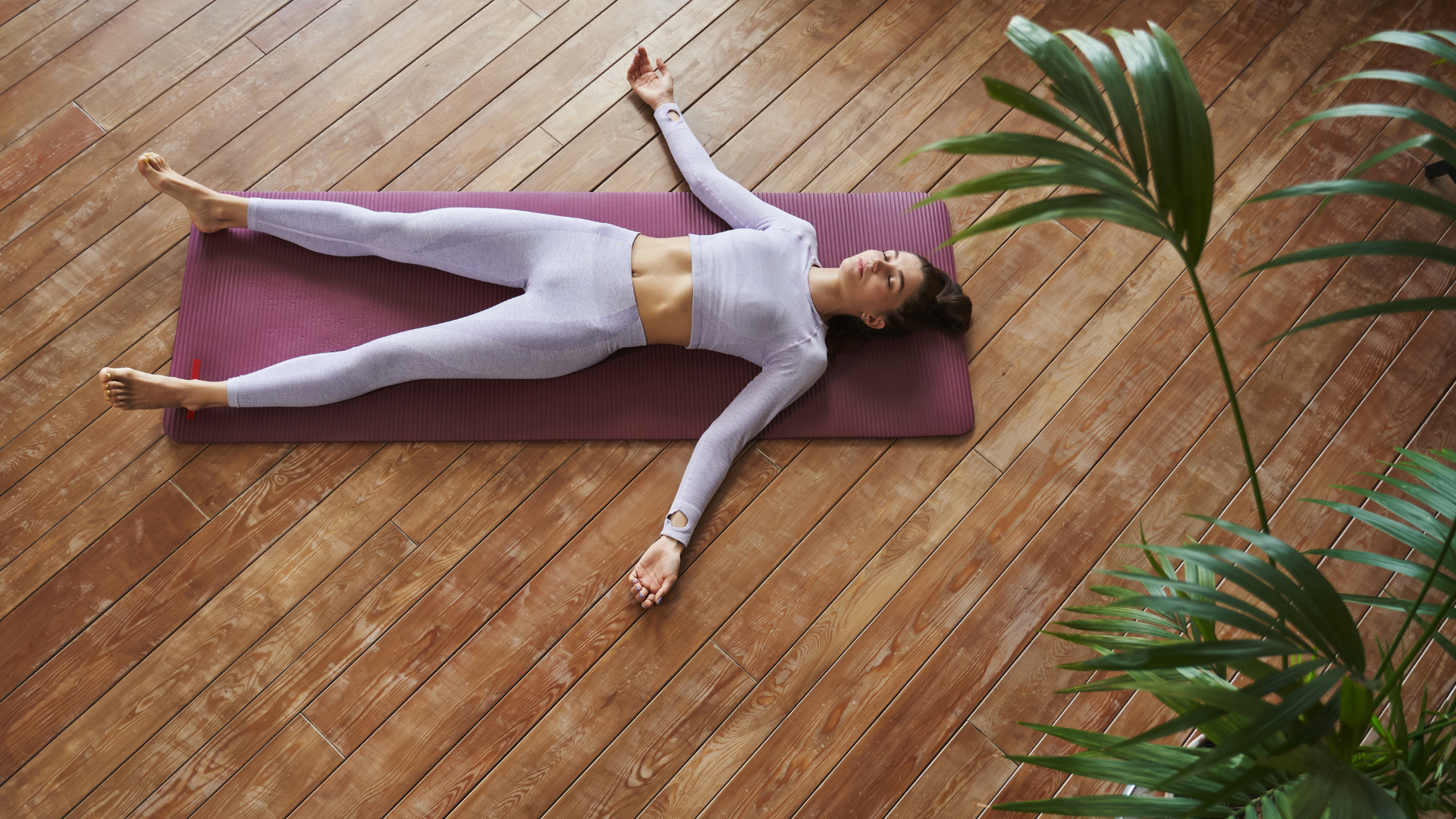
For more tips, read our blog, Unlock Your Body’s Healing Power with Restorative Yoga! And explore how gentle poses and deep relaxation can transform your mind and body.
How to Get Started
Starting your restorative yoga journey is easier than you might think. Here’s a step-by-step guide:
- Find a Quiet Space: Create a dedicated area for your practice. Dim the lights, light a candle, or play soft music to set the mood.
- Gather Props: Invest in a few basic props like a yoga mat, bolsters, blankets, and blocks.
- Set a Timer: Start with 20–30 minutes and gradually extend your sessions as you grow comfortable.
- Follow a Guide: Whether you join a class at Shyambhai Yoga or follow online tutorials, having guidance can make a big difference.
- Listen to Your Body: Restorative yoga is all about honoring your body’s needs. Adjust poses and props as needed to ensure comfort.
Common Myths About Restorative Yoga
Let’s debunk a few misconceptions that might be holding you back:
- “It’s Too Easy to Be Effective.” Restorative yoga may look simple, but its benefits run deep. It supports emotional healing, stress reduction, and even chronic pain relief.
- “I’m Not Flexible Enough.” Flexibility isn’t a prerequisite. The props do the heavy lifting, so you can relax without straining.
- “It’s Only for Stress Relief.” While it’s fantastic for stress, restorative yoga also enhances body awareness, improves circulation, and complements more vigorous exercise routines.
Tips for a Successful Practice
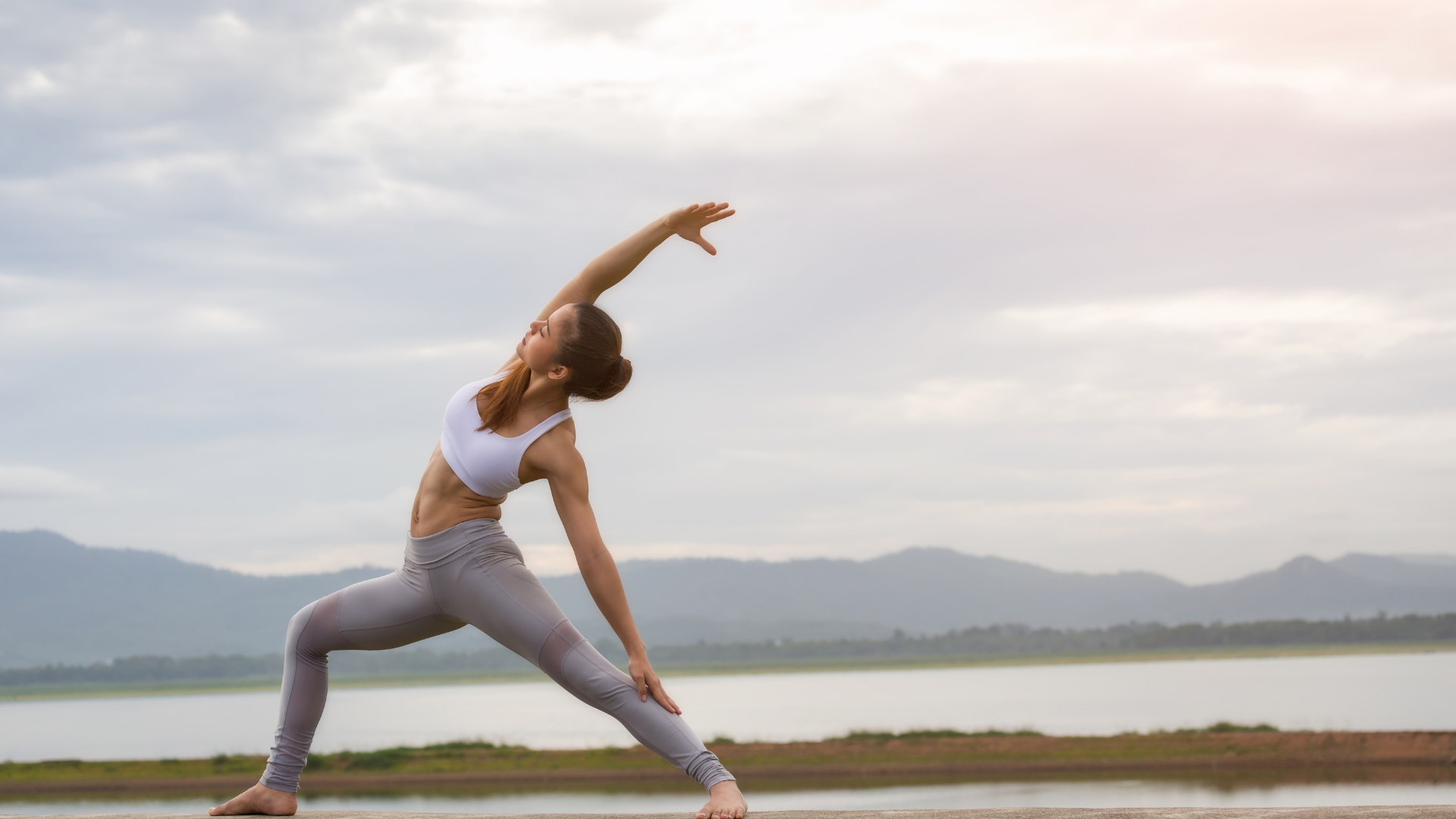
- Be Patient: Restorative yoga isn’t about instant results. The more you practice, the more you’ll appreciate its subtle yet profound effects.
- Use Props Wisely: Don’t shy away from props—they’re there to support you.
- Stay Warm: Keep a blanket nearby to ensure you’re cozy throughout the session.
- Breathe Deeply: Your breath is your anchor. Focus on slow, intentional breathing to deepen your relaxation.
The Shyambhai Yoga Experience
At Shyambhai Yoga, we’re passionate about helping you discover the silent strength within. Our restorative yoga classes are designed to nurture your well-being in a supportive and friendly environment. Whether you’re a seasoned yogi or stepping onto the mat for the first time, you’ll find a warm welcome here.
Conclusion
Restorative yoga is a gentle reminder that sometimes, the most powerful thing we can do is pause. It’s a practice that encourages us to honor our bodies, quiet our minds, and find strength in stillness.
If you’re ready to embark on a journey of self-care and serenity, we invite you to join us at Shyambhai Yoga. Together, let’s embrace the beauty of slowing down and discover the silent strength that lies within.
Inquiry
If you have any questions, please feel free to reach out. We’ll be glad to help!
